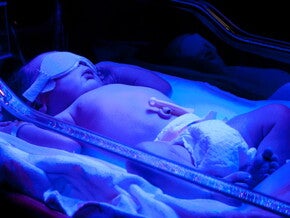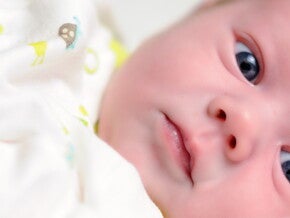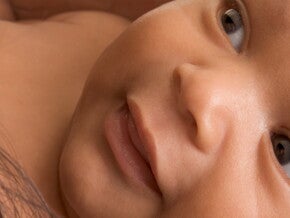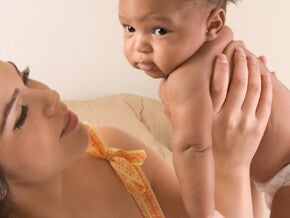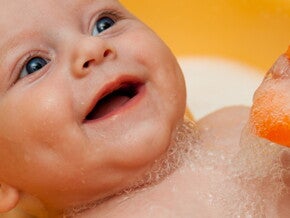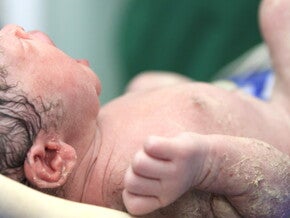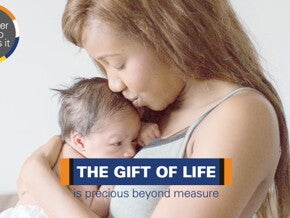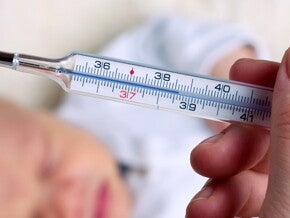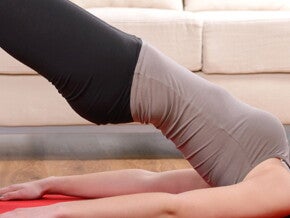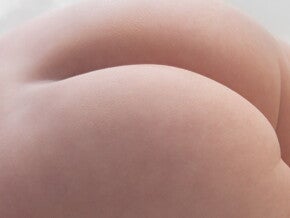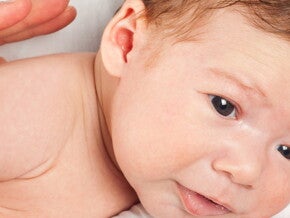
- Caput and moulding The baby’s skull bones are soft and flexible enough to mould for the delivery. Pressure during labour may cause swelling known as caput. This usually disappears within a few days.
- Cephalhaematoma is a collection of blood underneath the scalp, usually on one side. It takes a few weeks to disappear.
- Fontanelle or ‘soft spots’ are areas of skull bone which has not fused, to allow the brain to grow. The posterior fontanelle (back of the head) will close within weeks. The well-protected anterior fontanelle (top of the head) will close at between 12–18 months. The growth of the head is more important than the size of the fontanelle.
- Lanugo Fine “down-like” hair may cover some areas of the body, but will soon disappear.
- Vernix A slippery, waxy-white substance that protects and lubricates the skin to aid the baby’s passage through the birth canal. The vernix can be wiped off.
- Colour A temporary lack of oxygen at birth can make the baby look bluish. Once she starts to cry and breathe, she will become pinker. Hands and feet are often blue for the first few days.
- Blood The baby may be covered in blood from the tearing or cutting of your tissue.
Less common characteristics of the newborn
These may occur, but are not reasons for concern:
- Swelling or red marks, due to instruments used during the birth, should disappear within a few days.
- Milia, a fine white rash over the nose and face caused by blocked oil ducts, will clear on its own.
- Red marks on eyelids and the nape of the neck, known as stork bites, usually fade by nine months.
- Swollen breasts and enlarged external genitalia in both sexes are due to oestrogen from the placenta, and will reduce on their own.
- Puffy eyelids may last for a few days after birth.
- A squint is normal until about six weeks, when the baby gets binocular vision. Consult an eye specialist, if this persists after 3–6 months.
- Vaginal discharge or bleeding sometimes occurs in girls due to maternal hormones and is normal.
- Hiccups and sneezing are normal, involuntary actions and do not worry the baby.
